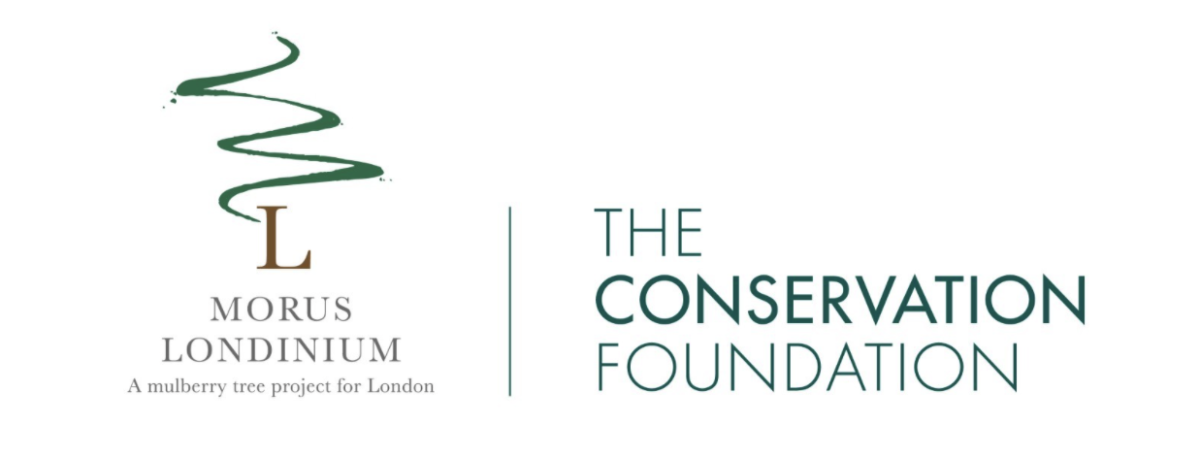
25th May 2021
The Conservation Foundation’s mulberry project wins European Heritage / Europa Nostra Award 2021
After the UK’s rather disappointing result in this weekend’s Eurovision Song Contest it is good to report that The Conservation Foundation’s Morus Londinium: London’s Heritage Through Trees project is one of the winners of the European Heritage/Europa Nostra Awards 2021 announced today.
Morus Londinium is one of 24 projects in 18 countries to receive this year’s top honour for cultural heritage, funded by the European Commission’s Creative Europe programme. The project was selected for its achievements in the Education, Training, and Awareness-raising category by independent juries of heritage experts from across Europe put forward by organisations and individuals from 30 European countries.
Begun in 2016 with a Heritage Lottery grant to The Conservation Foundation, the Morus Londinium project uses an interactive map and database to enable the public to record mulberry trees – young and old – along with any history and heritage stories. The project team, led by mulberry specialist, Dr Peter Coles, follows up notable trees with a site visit and archival research to uncover their stories, which are then published on the project’s website.
“The public has an enormous affection for our old mulberry trees, as is shown by recent protests when they have been threatened by development,” says Peter Coles. “When the project started there were fewer than 50 mulberry trees recorded in the Greater London area. We have now mapped well over 500, thanks to the project’s survey, which continues to receive new additions almost every week. A few of these trees date back to the 17th century, or even earlier, and most of the old trees revealed by the survey have never been recorded before. Many have survived World War II bombings and a century or more of urban development. Some of the veteran trees have their roots in gardens of demolished buildings that have long been buried under housing, shops, and offices.”
The jury commended Morus Londinium’s achievements as “representing an innovative way of learning, teaching, and researching the history of a place, promoting well-being in an urban context, and creating a sustainable way to preserve nature, thus fitting the goals of the 2030 EU Agenda for Sustainable Development. The idea behind the project encourages us to see ourselves within nature and to change our priorities and perception of time, in contrast to the speed of contemporary life, especially in cities.”
The jury also recognized that, by linking conservation and awareness of our natural heritage with the built and intangible heritage, the project has become “a pioneer in bringing heritage issues, the environment, biodiversity and sustainable urban living into the same forum of public and political debate.’”
Following the announcement of the award, The Conservation Foundation’s Director, David Shreeve, said “The Conservation Foundation is delighted to be receiving an award for one of its projects especially as we will soon be celebrating our 40th anniversary. Throughout those years we have given out a huge number of awards sponsored by a large number of organisations covering a wide range of environmental interests. It is great to be in the unusual position of receiving an award for ourselves.”
Explaining why mulberry trees have a special connection with heritage in the UK, Peter Coles says “Although the Romans introduced mulberries to England in the 1stcentury AD, the real watershed moment came in 1607 when King James I imported tens of thousands of mulberry saplings to be planted on the estates of the landed gentry. The aim was to start a home-grown silk industry and make Britain less dependent on silk imported from Italy, France, and Spain. James’s project failed, probably because of the cold, damp weather and a general lack of skill in raising silkworms and harvesting the silk. But it did leave an extraordinary legacy of 400-year-old mulberry trees dotted around the country. Mulberries have continued to be planted ever since for their fruit and ornamental beauty.”
Friends of The Conservation Foundation and mulberry enthusiasts from across the world are now encouraged to vote online to decide who will win this year’s Public Choice Award. The Public Choice Award winner will be announced during the European Heritage Awards Ceremony, which will take place in the autumn. The Grand Prix laureates, each of whom will receive a monetary award of €10,000, will also be made public on this occasion.
A second UK project, Archaeology at Home, has also received a 2021 European Heritage / Europa Nostra Award in the same Education, Training, and Awareness-raising category.
Further details of the 2021 European Heritage / Europa Nostra awards can be found here.
A video and further details of the Morus Londinium project’s award:
